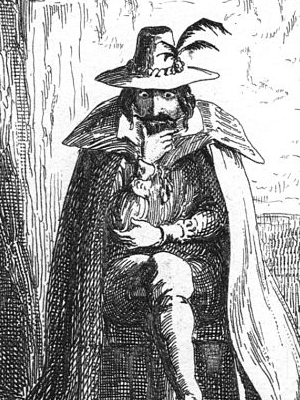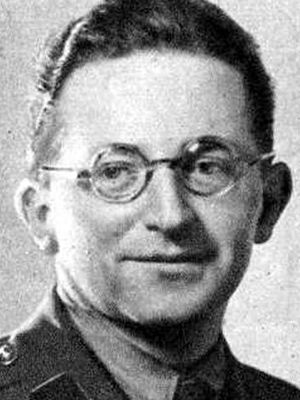History can be a messy subject.
Modern arrogance, political biases, and the influence of popular culture all have an impact on the way we see and discuss the past.
(Even historians get things wrong sometimes.)
This has led to a flood of historical falsehoods, including the five misconceptions you're about to encounter in this article.
Misconception #1: All Roman Gladiators Were Men

If you were asked to draw a Roman gladiator, you would probably draw a man. But though most gladiators were indeed male, there were some female ones too.
Historians don't know exactly when female gladiators were allowed to fight in the arena. But they were definitely around by the time Emperor Nero came to power in 54 AD. (Emperor Domitian once staged a night performance where female gladiators fought dwarves by torchlight!)
Typically, the female gladiators were either slaves or from the lower classes. But there were some from the senatorial class as well. Two of the most well-known female gladiators were called Amazone and Achillia.
Emperor Septimius Severus believed female gladiators were an insult to masculine virtues, so he banned women from fighting in the arenas around 200 AD.
Misconception #2: People in the Middle Ages Thought the Earth Was Flat

The Middle Ages are often viewed negatively, with many seeing them as a grim chapter in human history. It's an easy assumption to make, especially when comparing the Middle Ages to the glory of the Renaissance era.
A common misconception is that those who lived in the Middle Ages believed the Earth was flat. But this is nonsense. American historian Jeffrey Burton Russell tackled this myth in Inventing the Flat Earth (1991), demonstrating that early and late medieval thinkers knew the Earth was spherical.
While the Europeans of the Renaissance were the ones who popularized the idea of the "Dark Ages", it wasn't until the nineteenth century that the "Flat Error" became a common misconception. Russell cites the French archaeologist Antoine-Jean Letronne and the American historian Washington Irving as the villains who were responsible for popularising this fantasy.
He also makes an important statement about history and the arrogance of modernity:
"Our determination to believe the Flat Error arises out of contempt for the past and our need to believe in the superiority of the present."
Misconception #3: Guy Fawkes Was the Leader of the Gunpowder Plot

Those with an interest in British history may already be aware of this one. But for everybody else, you should probably know Guy Fawkes wasn't the leader of the Gunpowder Plot.
This common misconception seems to have occurred because Fawkes is the most well-known individual from the event, for he was the one who lurked in the cellar beneath Parliament, waiting to detonate 2,500 kilograms of explosives.
But the Gunpowder Plot wasn't the work of one man. Fawkes was part of a group of Catholics led by Robert Catesby. There were thirteen plotters, and their aim was to reverse the Protestant Reformation and make England a Catholic country again. It was Catesby, not Fawkes, who organized this operation.
After Fawkes was captured and tortured for information, four of the plotters — including Catesby — were killed in a shootout in Staffordshire. Those who remained were put on trial and executed for high treason.
Misconception #4: World War I Was the Deadliest Conflict in History Until World War II

Despite being the first of two world wars, World War I wasn't the deadliest conflict in history at the time it occurred. Back in the mid-nineteenth century, an even deadlier event took place: the Taiping Revolution.
Starting in 1850 and lasting for fourteen years, the Taiping Revolution was an uprising against the Qing dynasty in China that turned into a civil war. Often cited as an example of a grassroots movement, those who supported the uprising included peasants, craftsmen, and ethnic minorities.
The leader of the uprising, Hong Xiuquan, was a village school teacher from a peasant family. Other revolutionary leaders included Yang Xiuqing, a charcoal burner, and Xiao Chaogui, a poor peasant and woodcutter.
The numbers vary, but historians generally believe the death toll was between twenty million and thirty million. (Though some say the actual number could be much higher.) World War I, on the other hand, has a lower range: fifteen million to twenty-two million deaths.
Based on these estimates, the Taiping Revolution was a deadlier conflict than World War I. However, the Taiping Revolution was confined to one country, China, while World War I was fought over the world.
Misconception #5: The British Were the First to Crack the German Enigma Code

The story of Alan Turing and the codebreakers at Bletchley Park is a well-known part of World War II, especially in Britain. But the popularity of this story has led many to believe Turing and his team were the first to break the Enigma Machine.
However, Polish mathematicians were actually the first ones to crack the code. Back in 1932, three ingenious men from Poznan University joined the Polish Cipher Bureau and started working on the Enigma Code. Their names were Marian Rejewski, Henryk Zygalski, and Jerzy Rozycki.
Using information from the French military intelligence, the Polish codebreakers worked out the wiring and rotors inside the Enigma Machine. Rejewski then built a card index system using six-letter groupings and designed a contraption that could identify the rotor order of the Enigma Machine. This enabled them to read the encrypted messages.
But there was a problem. The Germans introduced new rotors to the Enigma Machine in the late 1930s, and the Poles simply didn't have the resources to crack them. So, in July 1939, there was a secret meeting between British, French, and Polish codebreakers in Warsaw.
The Polish codebreakers discussed their progress, revealing the methods they had used to break the code. Turing was impressed. He realized the only way to beat the Enigma Code for good was to build a machine similar to the one the Polish codebreakers had created.
Sources:
Alan Turing: The Enigma Man (2014) by Nigel Cawthorne
Modern China: A Topical History (1985) by Su Kaiming
The Gunpowder Plot (2002) by John Malam
The Gladiators: History's Most Deadly Sport (2005) by Fik Meijer


